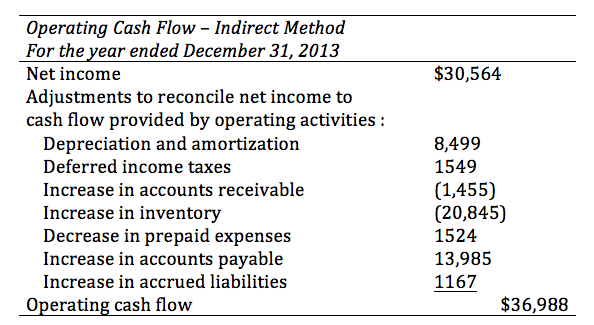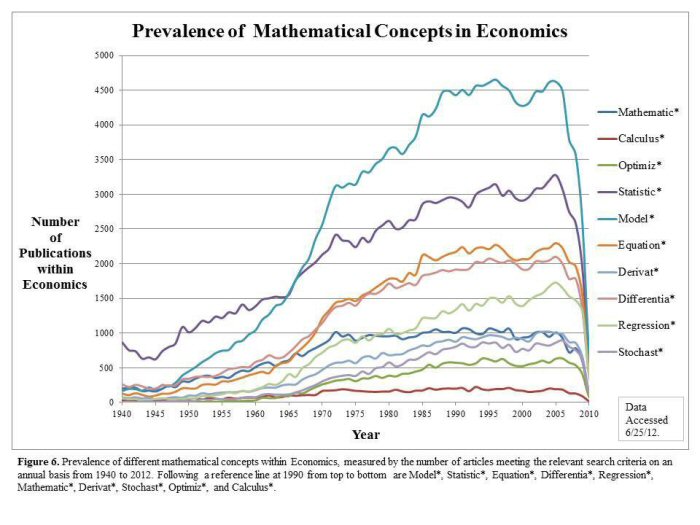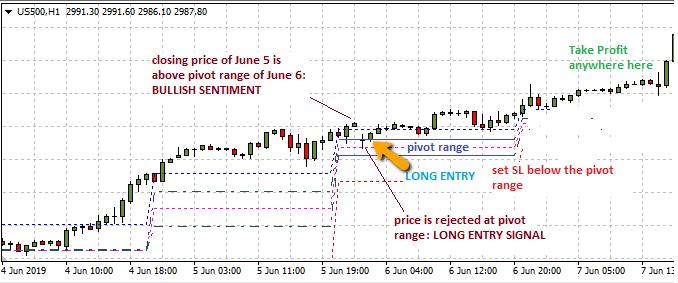Contents:


Cash balance at the bank of a company and the cash balance maintained at the company’s cash book often do not match due to a number of factors. Thus, companies are required to perform bank reconciliation that showcases the difference between the cash balance in company’s cash account and the cash balance according to its bank statement. Therefore, each transaction on the bank statement should be double‐checked. If the bank incorrectly recorded a transaction, the bank must be contacted, and the bank balance must be adjusted on the bank reconciliation. If the company incorrectly recorded a transaction, the book balance must be adjusted on the bank reconciliation and a correcting entry must be journalized and posted to the general ledger. This error is a reconciling item because the company’s general ledger cash account is overstated by $63.
U.S. natural gas tests $2 support after first spring season storage build – Yahoo Finance
U.S. natural gas tests $2 support after first spring season storage build.
Posted: Thu, 13 Apr 2023 16:23:09 GMT [source]
There are multiple differences between the bank balance and book balance. First, there are likely to be checks outstanding that were recorded in the company’s book balance, but which have not yet been presented to the bank, and so are not recorded in the bank balance. Second, the company may have incorporated a deposit in transit into its book balance, but the bank has not yet processed it, so it does not appear in the bank balance. Third, the bank may have charged the company for a variety of fees, such as interest charges, account maintenance charges, and check processing charges, which are included in the bank balance but not the book balance. Finally, the company or the bank may have erroneously recorded a transaction, which results in an unresolved difference between the two balances.
Account Balance Defined and Compared to Available Credit – Investopedia
If nothing is found in the books, it may be because nothing was recorded. On the April reconciliation, it would have been listed as a deposit in transit on the bank side of the reconciliation. Since it cleared in May and would have already been included in your book balance, no further action is required. There are two parts to a bank reconciliation, the book side and the bank side.
If this still seems confusing, you may want to review the chart on page 19 and think about how the company classifies their account as an asset while the bank classifies the company’s account as a liability. Since the book balance is the gross balance of funds in the account before any checks are cleared or deposits posted, the figure may or may not accurately reflect how much money the account holder has to work with. In order to arrive at that figure, it is necessary to deduct any outstanding checks or other debits from that balance. Sometimes referred to as a net balance, this figure represents what is left after pending debits have cleared.
Therefore, period costs records may show one or more deposits, usually made on the last day included on the bank statement, that do not appear on the bank statement. These deposits are called deposits in transit and cause the bank statement balance to understate the company’s actual cash balance. Since deposits in transit have already been recorded in the company’s books as cash receipts, they must be added to the bank statement balance. The Vector Management Group made a $3,000 deposit on the afternoon of April 30 that does not appear on the statement, so this deposit in transit is added to the bank statement balance. While performing a bank reconciliation, you note that your general ledger balance is $6,100 while your bank statement balance is $6,010.

Say for your May 31 bank reconciliation, you show an ending balance of $5,500 in your cash account as of May 31, but your bank balance per the statement is $6,000. Abank reconciliationis one of the most common kinds of reconciliation. Every business has at least one business bank account, and companies generally reconcile their bank accounts monthly. After reconciliation, the adjusted bank balance should match with the company’s ending adjusted cash balance.
More Resources on Small Business Accounting
I already explained to him that he can’t comingle funds and treat his business like a personal piggy bank. I’m trying to fix his books from last year so he can file his taxes. I am a student trying to help a family member that has a small business. I would even pay for this advice and charge him later.
Banks often pay interest on checking account balances. Interest income reported on the bank statement has usually not been accrued by the company and, therefore, must be added to the company’s book balance on the bank reconciliation. The final transaction listed on the Vector Management Group’s bank statement is for $18 in interest that has not been accrued, so this amount is added to the right side of the following bank reconciliation. The bank balance is a company’s cash position in a company’s bank account as reported at the end of the month, according to the bank statement. When debits and credits are processed through the bank account, those amounts are reflected in the bank account’s cash balance.
If the checks were to pay A/P and you want to reinstate the A/P balance, you would need to debit the checking account and credit A/P with the name of the vendor attached to the entry. If you did not want to reinstate the A/P balance, you could credit the expense account used in the initial recording of the bill. Let’s imagine that you recorded a check for $715, but the bank cleared that check for $751. The check was used to pay for utilities and was recorded to utilities expense for $715. If the check cleared for $751, what happened to your utilities expense?
Explain the difference between book balance and bank balance.
How do I reconcile a cheque that is replaced with another and also increased? FloQast’s suite of easy-to-use and quick-to-deploy solutions enhance the way accounting teams already work. Learn how a FloQast partnership will further enhance the value you provide to your clients. Emma’s 70-person geographically distributed accounting team improved internal controls and streamlined the audit thanks to FloQast.

NSF checks that have been dishonored by a bank due to insufficient funds in the issuer’s bank account. Add back any receipts for deposits in transit from a company to the bank, which have been paid in but not yet processed by the bank. Create a bank entry, the amount should be the difference between the book balance and the GL amount.
Therefore, cash must be adjusted down or decreased by $36. This would be subtracted from book side of the reconciliation. While performing a bank reconciliation, you note that your general ledger balance is $6,000 while the bank’s monthly statement shows a balance of $5,990. You note that the bank charged a monthly maintenance fee of $10. Ideally, you should reconcile your bank account each time you receive a statement from your bank. This is often done at the end of every month, weekly and even at the end of each day by businesses that have a large number of transactions.
The balance per book is the ending balance in your check register. Look at the last transaction in the books and use that balance. If they do not, take the difference between the two balances. Check to see if there is a missing item for that amount that you might have forgotten to record. Place them in the reconciliation and see if you now balance.
You’ll need to reverse the entry to make the account even, then you’ll need to record that entry again to get the bank account where it needs to be. Hopefully, outstanding checks are less than GL balance. Checks and debits reduce the balance no matter which side of the reconciliation they are on. Also, don’t confuse the format I use with a T-account.
To determine if you should add or subtract the item, mimic what the bank did. If the bank added it to the account balance, do the same to the book balance. XYZ LTD has made a standing order to its bank to transfer an amount of N10, 000 on the 27th day of every month , as monthly subscription charges, to an association. On 30 November 2016, the bank statement shows a balance of N200, 000 whereas the cash book balance was N210, 000. The difference represents the amount of payment through standing order not yet recorded by XYZ LTD. When it comes to pending deposits, it is usually not a good idea to add that amount to the book balance in order to determine how much of the account balance can be withdrawn or otherwise used.
What Is The Difference Between Book Balance And Bank Balance?
You should always use the available balance to determine how much money you have available for purchases and withdrawals. Otherwise you might overdraw your account if you spend based on your account balance and it is higher than your available balance. You can also keep a buffer of cash in your account to protect you from unexpected expenses and delays. If you’re always “running on fumes,” you’re eventually going to have a problem.
- Please see the job description for a full list of duties.
- The next step is to adjust the cash balance in the business account.
- Being confident in the bank side helps resolve errors on the book side.
- When expanded it provides a list of search options that will switch the search inputs to match the current selection.
Explain the reasons why a business should compare its cash book with the bank statement. The term bank balance is commonly used when reconciling the bank statement. It is also known as the balance per bank or balance per bank statement.
But the https://1investing.in/or cannot record all these in his ledger accounts for not receiving information in time. Therefore, for this interim period, disagreement between the two balances exists. Electronic charges on the bank statement are not yet recorded in the books. It appears that you need to record all of the transactions that cleared the bank in your books.
- Once you have those two items, use a pencil or highlighter to mark off all the items that appear on both the bank statement and the check register.
- Bank reconciliations should be performed at least at the end of each month, or more often in a business with a large number of transactions.
- Bank fees.Banks may charge monthly maintenance fees, ATM fees, excessive transaction fees, overdraft fees, insufficient funds fees, and other service charges.
- Statement unless the un-presented checks have been presented, or the uncollected checks collected.
- Harold Averkamp has worked as a university accounting instructor, accountant, and consultant for more than 25 years.
You would reconcile the credit to cash from the reversing entry against the debit to cash from the April deposit entry. From a quick google search, they seem to be the same thing. Deposit in transit is used on the bank side of the reconciliation when a deposit has been recorded on the books but has not been recorded by the bank.
Explain how to remember accounting normal balances for each account. Explain differences between accounting practices around the world. Explain what if allowance for doubtful accounts has a debit balance. Describe the difference between financial accounting and managerial accounting.
